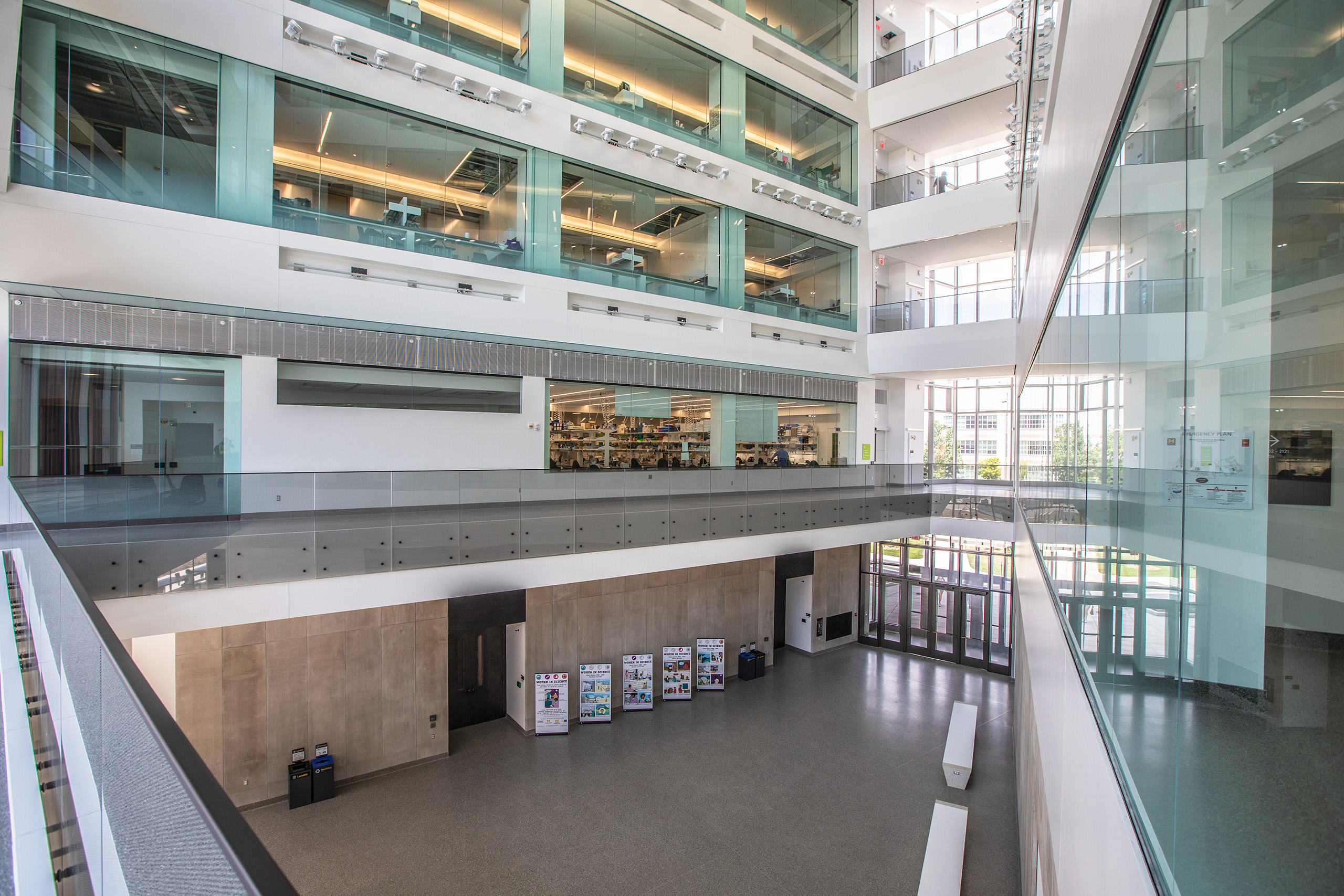University of Michigan: A Partnership Built on Trust
Projects
Educational facilities, healthcare work, athletic expansions… you name it, and Barton Malow’s built it for the University of Michigan (U-M). Since entering the partnership some four decades ago, the university has relied on Barton Malow’s construction expertise for a variety of projects across its sprawling 21,000-acre campus in Ann Arbor, Michigan.
It all began with healthcare. In the 1980s, Barton Malow built several structures for the University Hospital, including an ambulatory care center, a burn center, and an 11-story, 585-bed general hospital. That momentum was carried through the years with the completion of the new C.S. Mott Children’s Hospital & Von Voigtlander Women’s Hospital in 2011, which ranks as one of the best children’s hospitals in the nation, and the D. Dan and Betty Kahn Health Care Pavilion at Michigan Medicine, which is currently under construction.
Located in the middle of an active healthcare campus with active roadways flanking each side of the jobsite, construction at the Pavilion at Michigan Medicine hasn’t come without its challenges. Thanks to the diligent work of the project teams, the 690,000 SF facility is slated for completion in the spring of 2025.
“The University of Michigan trusts us with their biggest and most challenging projects based on the past success we’ve had,” says Barton Malow Senior Project Executive Rob Rankin.
Throughout his decade-long career at Barton Malow, Rob has spent much of it working on U-M projects, including the Pavilion at Michigan Medicine, the Central Campus Recreation Building, buildings 20 and 25 of the North Campus Research Complex, the Alexander G. Ruthven Building, and his favorite, the Biological Science Building (BSB).

University of Michigan's Biological Science Building
With glass sourced from Barcelona, Spain, and terracotta hailing from Munich, Germany, the BSB’s unique exterior was designed to transition between U-M’s historic central campus and the more modern science and medical campuses to its north. Shoehorned into a tight space at a busy part of campus, the building’s location created additional challenges for the team. Looking back, Rob recalls the measures taken to ensure everything was done in a safe manner.
“We estimated 10,000 students a day walking around our jobsite,” he recalls. “The logistical challenges of safely delivering materials to the project site and working around that active campus, especially next to a crosswalk that is very steady with traffic, are huge challenges. We did that without any incident, which is a huge testament to the team.”
The BSB also houses the U-M Museum of Natural History, which was once located in the Alexander G. Ruthven Building. In December 2021, Barton Malow completed a $109 million renovation on the 96-year-old Ruthven building, including a historical restoration of the entryway’s rotunda, the addition of a 100,000 SF classroom, and a 600-person auditorium, among other work.
Just steps away from the BSB and Ruthven Building is U-M’s Palmer Drive Development, a collection of buildings that promote cross-disciplinary research. The Life Sciences Institute and Undergraduate Science Building offer laboratories, classrooms, and offices for students and scientists studying on U-M’s campus.
Completed in 2005, all project components of the Palmer Drive Development were phased, with completion and occupancy occurring over a three-year period. The smooth scheduling and completion are in part thanks to Barton Malow’s Preconstruction group, which was responsible for developing the unique logistics and schedules that allowed the phased completion to progress on time and with minimal disruption to other campus activities. When it comes to building on U-M’s campus, Barton Malow does not shy away from complexity.
“Every project is totally different, but each one is rewarding,” Rob says. “That’s what’s really kept me interested in this client for 10 years.”
"The logistical challenges of safely delivering materials to the project site and working around that active campus are huge challenges. We did that without any incident, which is a huge testament to the team."
Rob Rankin
Senior Project Executive
Hail to the Victors
In 2007, Barton Malow embarked on expanding and renovating the iconic Michigan Stadium (also known as the Big House) — less than 24 hours after the last game of the Wolverines’ football season. Over the next three years, project teams would work nearly round the clock to complete the work while avoiding any issues during each subsequent football season. Project teams put in place over $60 million of construction work in the first nine months. During the 2008 football season, Barton Malow worked thoroughly every Monday through Thursday before safely turning the site back over to the University of Michigan for the weekend’s big game.
Partnership comes in many forms. Not only was this project about upgrading the college football experience for athletes and fans, but it also let Barton Malow support the next generation of builders. The stadium’s project team took to the classroom to speak to students about challenges team members came across during construction. Barton Malow team members also supported class projects from the College of Engineering, including a graduate course-study project where the class visited the jobsite on a weekly basis, covering topics such as foundations, structural steel, and locker room renovations.
It’s stories like these that demonstrate the strength of Barton Malow’s partnership with the University of Michigan.







